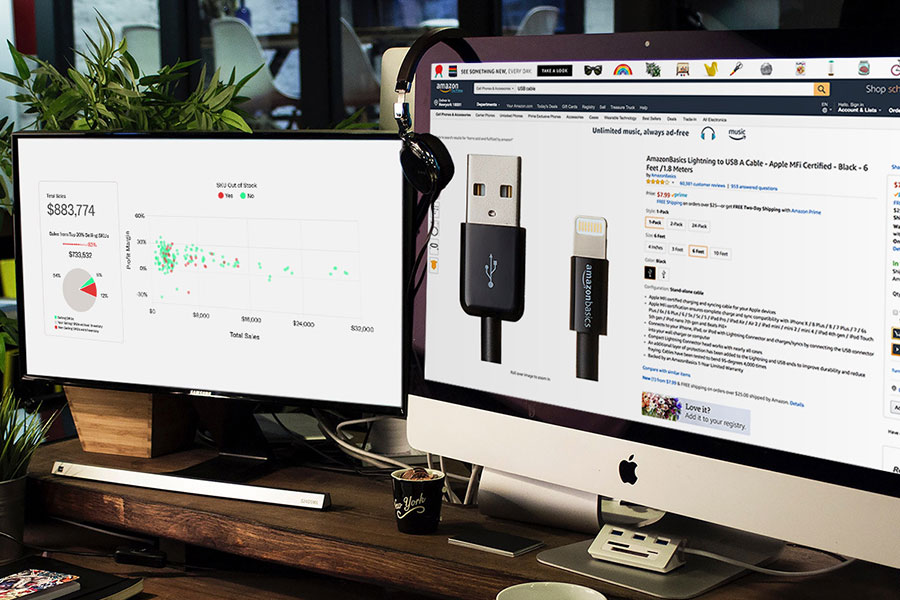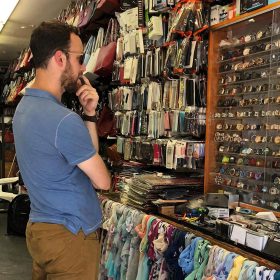Resources - Blog
How to Capitalize on Amazon’s New Products and Private Labels

Leading up to Prime Day 2018, Amazon had over 80 private label brands, which is up from around 40 in 2017 — revealing the dominant role that the e-commerce leader is playing within e-commerce’s private label landscape, as that number of brands has likely even increased since July. During the annual shopping event, Amazon was sure to highlight their own brands through deals marketed with urgency, attention-grabbing landing pages, and significant price discounts.
The most popular Prime Day categories in the United States ended up being the following: nearly 41% of shoppers bought computers and electronic items, nearly 38% purchased apparel and accessories, and nearly 34% bought an item from the books, music, and video category. Amazon’s Fire TV Stick and Echo Dot, both Amazon branded items, were two of the top-selling items from Prime Day 2018, revealing that electronic private label items might be a sweet spot in the retailer’s portfolio.
Amazon capitalizes on the data that it collects on other sellers in order to optimize their own private label brand launches, particularly the ones that specifically target different subsets of shoppers. For anyone engaging in private label ventures, the brands allow for thorough analysis of the audience’s shopping behavior — tracking what they want and when. According to a CNBC report, AmazonBasics exceeded $200M in sales during the first half of 2017. The private label line sells everyday essentials such as electronic items, kitchen supplies, bedding, and office supplies.
Amazon Elements, the private label line known for baby supplies and vitamins, brought in about $9.5M in sales. The company is utilizing their Prime buyer audience to test what labels are and are not successful, with many of the newer private labels available exclusively to Prime members. Amazon now has private labels in each of the following categories: women’s workwear and everyday clothing, women’s athletic wear and swimwear, underwear, loungewear and pajamas, men’s clothing and shoes, child and baby clothing, food and grocery, health and household, furniture, home goods, bedding, and more.
Stay on top of the latest e-commerce and marketplace trends.
How to Capitalize on These Categories and Remain Profitable
For online retailers, it is inevitable that competition with Amazon will pose a concern. As the company continues to fortify its newfound presence in the digital marketing space, earnings numbers show that the e-commerce leader is quickly gaining significant traction in new business areas — industry analysts are estimating that the company’s ad revenue will hit nearly $19B in 2020.
Given this information, as retailers, you are left with little choice but to invest in your online business and participate in common business practices such as advertising or risk being left behind. Knowing your catalog and audience in detail will help you compete with Amazon if the situation arises. To combat head-to-head scenarios with Amazon, you must be willing to constantly adapt your marketplace strategy to changing customer behavior, long and short-term business goals, and updated fees and regulations on the Amazon platform.
Competition with Amazon is fierce for not only private label items, but competitive Buy Box items as well. Discovering that your best-selling item is now being sold by Amazon is a scenario that every online retailer strives to avoid. As mentioned earlier, the company likely uses the data from marketplace transactions and competitive interactions to their advantage when deciding if they are going to jump in on a listing or not. When Amazon directly competes with you, that can sometimes be the cue to drop your prices and liquidate the product. However, this is not always the case.
When Amazon starts selling one of your items, keeping your sales profitable can be difficult but not impossible. For private label items, larger players almost always win, especially if the product is exclusively for lifestyle purposes and not need-based, like much of what is offered on Amazon. Besides taking up market share through private labels in a wide range of categories, Amazon’s items also feature one of the company’s key qualities: affordability. For Buy Box items, it is hard to compete with Amazon because they either put the same product up against yours or give the Buy Box to the wholesaler selling your product at the lowest price. The Buy Box is awarded to the seller with the best combination of high seller performance metrics and low-cost price.
There are other attributes that Amazon’s algorithm analyzes when considering a Buy Box winner, such as fulfillment method, item condition, shipping time, seller feedback count and score, order defect rate, late shipment rate, on time delivery, cancellation rate, and refund rate. It is common that Buy Box winners maintain their share with higher prices than their competitors — they simply maintain stronger performance metrics when it comes to availability or shipping. You can beat Amazon to the Buy Box by aiming to perfect at least one of these areas: greater availability, faster shipping time, and a lower or more competitive price. While many people think they can only beat Amazon if they set an extremely low price, this is not always the case. Although it can help swing the Buy Box in your favor, it is not the sole solution.
In order to remain in the game with Amazon, you will need to prioritize your seller performance metrics. If these ratings are high enough, you will only have to lower your price minimally below Amazon’s price in order to compete with them. Here are three key strategies you can employ to help you compete with Amazon while remaining profitable:
- Utilize an Amazon repricer that can alert you when Amazon has entered and left the competitive arena. Doing so will help you keep an eye on the product so you can be sure to jump back in once Amazon is out of the picture. It will help you maintain a healthy balance between risk and opportunity.
- Consider creating new variations of products that will have a different ASIN with its own Buy Box share. Doing so will help you avoid competing directly with Amazon. For example, you can create bundles under ASINs or with frustration-free packaging, which you can find in Seller Central. These variations can help you win the Buy Box.
- Be patient. Keep in mind that if Amazon jumps in on your product listing, your sales rank may increase as a result. This can be situational, but if Amazon sells your product for a limited period of time and either pushes advertising or sells high volumes at a cheap price, you may benefit from that improved sales rank once Amazon has left the competition.
Learn what Feedvisor can do for your business.
When you partner with Feedvisor, you automatically receive access to our true, AI-driven technology and hands-on team of e-commerce experts. Contact one of our team members today to learn more about our end-to-end solution for brands and large sellers on Amazon, Walmart, and e-marketplaces.



